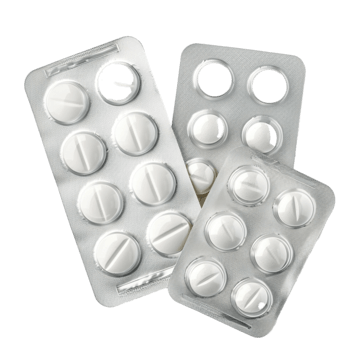Chloramphenicol

Chloramphenicol 250mg, 500mg
Chloramphenicol is a broad-spectrum antibiotic used to treat a variety of bacterial infections by inhibiting protein synthesis in bacteria. It is effective against both Gram-positive and Gram-negative bacteria and is particularly useful in treating serious infections like typhoid fever and bacterial meningitis when other antibiotics are not suitable. Despite its effectiveness, chloramphenicol is associated with potential side effects, including the risk of aplastic anemia, which has led to its restricted use in some cases.
Order NowDescription
Chloramphenicol is a broad-spectrum antibiotic that is effective against a variety of bacteria, including both gram-positive and gram-negative organisms. It works by inhibiting bacterial protein synthesis, ultimately leading to the elimination of the infection.
Uses / Indications
- Bacterial meningitis
- Typhoid fever
- Eye infections (topical formulations)
- Serious infections caused by sensitive bacteria (when other treatments are not suitable)
- Rickettsial infections
- Cholera (in some cases)
Dosage and Administration
Adults:
Initial: 500 mg to 1 g every 6 hours; dose may be adjusted based on the severity of the infection and clinical response.
Children:
Typically, 50–100 mg/kg/day divided into multiple doses, depending on the type and severity of the infection.
Note: Dosage may vary based on the individual’s medical condition and the physician’s recommendation.
How It Works (Mechanism of Action)
Chloramphenicol exerts its antibacterial effect by inhibiting the 50S subunit of the bacterial ribosome, blocking peptide bond formation and effectively preventing the bacteria from synthesizing essential proteins. This action helps curb the growth of the bacteria, allowing the immune system to clear the infection.
Side Effects
Common side effects:
- Nausea and vomiting
- Diarrhea
- Loss of appetite
- Headache
Rare/serious side effects:
- Aplastic anemia (bone marrow suppression)
- Gray baby syndrome (in newborns)
- Severe allergic reactions (rash, swelling, difficulty breathing)
Seek medical attention if serious side effects occur.
Precautions / Warnings
- Inform your doctor if you have a history of blood disorders, liver disease, or are pregnant/breastfeeding
- Use with caution in patients with existing kidney problems
- Avoid prolonged use due to the risk of serious side effects, especially aplastic anemia
Drug Interactions
May interact with:
- Drugs that can affect bone marrow function (e.g., certain chemotherapy agents)
- Anticoagulants (may enhance anticoagulant effects)
- Rifampin (may affect the effectiveness of chloramphenicol)
Always inform your healthcare provider about any other medications or supplements you’re taking.
Storage Instructions
- Store at room temperature (20°C–25°C / 68°F–77°F)
- Keep away from moisture, heat, and direct light
- Reconstituted solutions should be refrigerated and used within a specified time
- Keep out of reach of children
Missed Dose / Overdose
Missed a dose?
Take it as soon as you remember. If it’s almost time for your next dose, skip the missed one. Do not double up.
Overdose symptoms:
- Severe nausea or vomiting
- Diarrhea
- Unusual bruising or bleeding
- Confusion or dizziness
Contact a poison control center or seek emergency medical help immediately.
Contraindications
- Allergy to chloramphenicol or any other component of the formulation
- Bone marrow suppression conditions, including aplastic anemia
- Newborns and premature infants (risk of gray baby syndrome)
Brand Names / Alternatives
- Chloromycetin
- Generic name: Chloramphenicol

